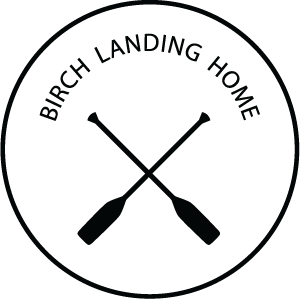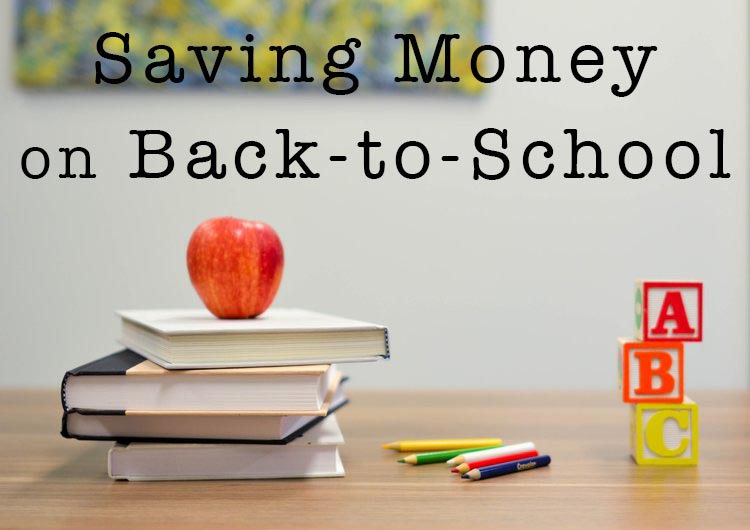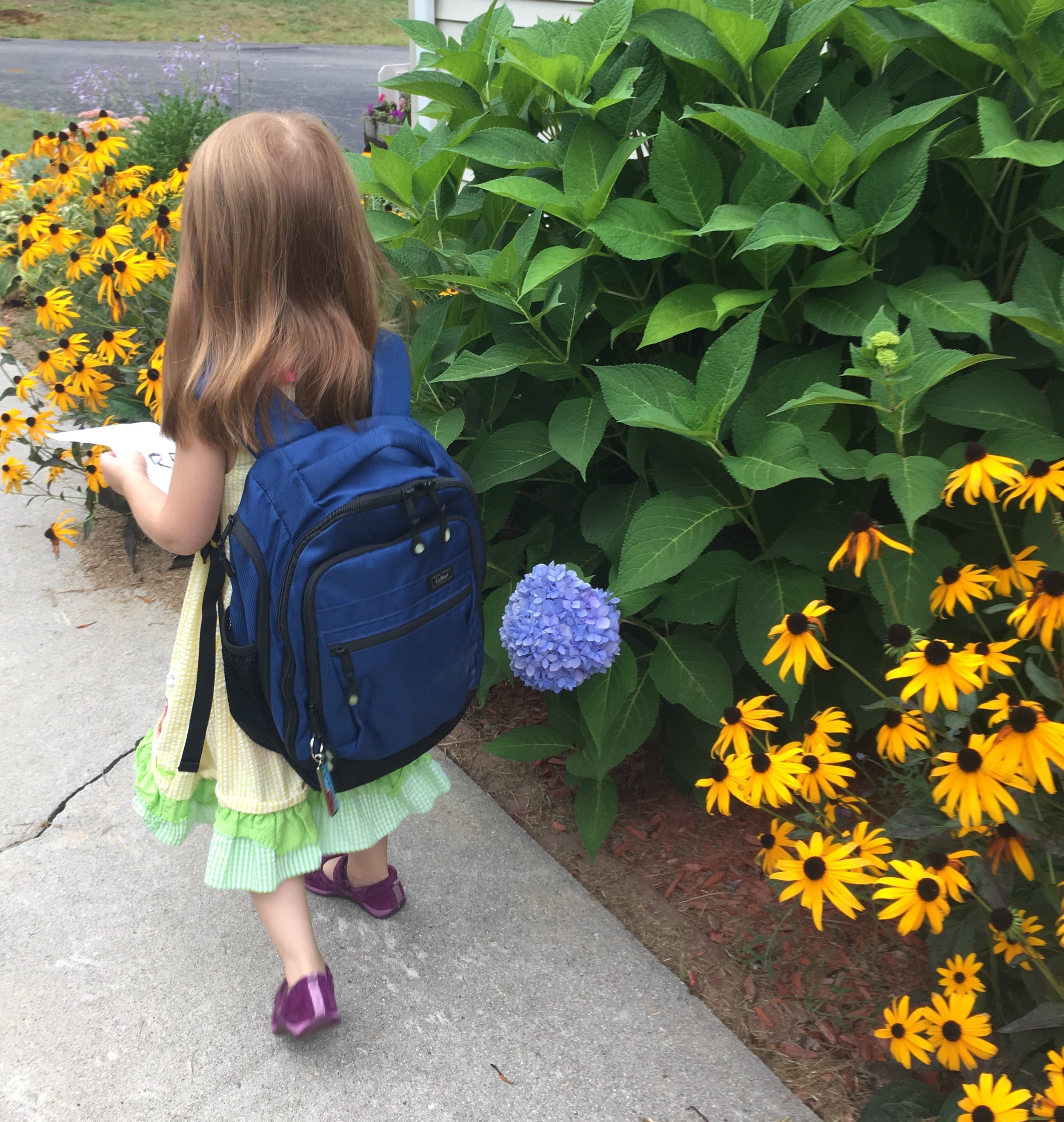Sending the kids back to school usually means shelling out a lot of money on school supplies, clothes, and more. Here are some of my tips on how NOT to go broke this fall. | This post contains affiliate links |
Invest in a Good, Basic Backpack and Lunchbox
Question: How many parents buy their kids new backpacks and lunchboxes every single year?
Answer: Wayyyy too many!
There's really no reason to shell out money that often on items that can can stand the test of time if you pick them right. I highly suggest NOT picking a character or crazy pattern backpack or lunchbox. Kids' tastes change from year to year (and sometimes week to week), and if you pick themed or cheaply made items they will not last. Our general guideline is upgrading backpacks once every "big transition" in school - so one backpack to last kindergarten through elementary school, a new one to last through middle school, and then finally a new one for high school. We love solid-color backpacks from high-quality companies like LL Bean - you just know they're going to last and never go out of style. (Pro-tip: check out the Outlets to get great, name-brand backpacks for less!)
Consignment Shop for Back-to-School Clothes
If you've been following the blog for any amount of time now, you know I'm a big fan of consignment selling and shopping. It's a great way to get rid of any clothes or shoes your kids might have outgrown or refuse to wear and make some money back to use on gently used, name-brand "new" items. That way you're essentially "trading up" for new clothes, and spend a lot less out of pocket.
{You can read more on my Consignment Selling and Shopping Tips HERE}
Buy Snacks in Bulk and/or Store Brand
If you pack your child's snacks and lunches the cost can definitely can add up over time. One way to save is to buy in bulk whenever possible. If you can buy prepackaged snacks in larger quantities the price-per-item is a lot lower. Buying store brand items over name brand is another great way to save.
Juice boxes are expensive (and arguably unhealthy), so having your child take a reusable water bottle to school saves a lot of money and also helps keep their sugar intake in-check.
Reuse Last Year's School Supplies
A lot of times the school supply list will include things like a set of binders, markers, glue, a pencil case, etc. Many times there's no reason to repurchase these things - they can often be reused from year-to-year. Empty out the old papers from last years binders and reuse those. And the makers, crayons, glue sticks, etc? They likely have plenty of life left - no need to buy more just yet!
Coupon and Rebate Apps
And of course, a great way to save if you need to buy items is to use coupons or rebates whenever you can. We really love Coupons.com for printing coupons and the rebate app Ibotta for earning money back on purchases. At the beginning of the school year, coupons and rebates on back-to-school items are usually plentiful, but make sure to only buy what you really need!
KEEP UP WITH BIRCH LANDING HOME
| Etsy | Facebook | Instagram | Pinterest | Bloglovin' | Hometalk |
I absolutely love where we live - a small resort town, surrounded by lakes and mountains. Always lots of great outdoor activities to do or small shops to explore in town. But living out here does have it's drawbacks too - for one thing, the hospital we delivered our daughter at was an hour and half away (ugh). But one of the biggest things we struggle with on a day-to-day basis is not going broke on groceries - with discount stores over an hour away and only IGA (Independent Grocer Alliance) grocery stores in town we tend to pay up to 30% more for most items.
I support shopping local and shopping small whenever possible, but as a single-income household saving money where we can is absolutely necessary. I've read many articles tailored to saving money at big-box and discount stores, but most of those tips just don't apply here. Please read on for some of my rural livin' money-saving grocery tips. | This post contains referral links |
Tips for Saving Money on Groceries {Rural Edition}
- Grow/Raise What You Can. I know not everyone has a green thumb or is willing to raise livestock but having even a small backyard garden or some patio veggie plants can pay off big. For example spending a few dollars for a couple patio tomato plants can supply you with more than enough tomatoes to last you the entire summer. For us, we've had a small garden for the past couple of years and this spring we decided to add raising chickens to the mix. We go through as many as two dozen cage-free eggs a week and figured that raising our own chickens would be fun, educational for our daughter, and eventually would provide us with a savings on eggs too.
- The Freezer is Your Friend. I hate throwing out food, especially food that I paid good money for. So lately I've taken to freezing more and more things, especially those that seem to have the shortest shelf life. For example, my husband loves putting kale in his breakfast smoothies (you can't even taste it!) but it would always go slimy before he finished the bunch. Now we wash and freeze it right away and he blends it, still frozen, into his smoothies. Other things that I've been freezing more lately are meats, mushrooms, fresh herbs, bread, and of course leftovers.
- Shop Local and Extra-Small. Try shopping for produce at local farmer's markets, or even better, roadside mom and pop farm stands. Those little tables and coolers at the end of driveways are often amazing deals on fresh vegetables. These people usually aren't out to make a profit, they're simply selling their extra produce for fun and a little extra cash so it's usually a really great value - and if you're lucky they may be giving things away if they have an over-abundance. One year a gentleman down our road gave away bushels and bushels of corn because he just had so much and didn't want it to go to waste.
- Amazon and Online Shopping. I know this is the polar opposite of "shop small" but you just have to be practical too. Items like paper towels, toilet paper, and cereal can cost nearly twice as much here in town than it does at big-box stores or online. And so we choose to buy these items on Amazon - and by using some of Amazon's features like free Prime shipping and "subscribe and save", we're able to save even a little more. If you use Amazon, don't forget to sign up for AmazonSmile so your purchases benefit the charity of your choice!
- Bring Your Own Bags. Every store has different policies, but more and more are rewarding their customers for bringing their own bags. At our local grocery stores they give you 5 cents off your total for every reusable bag you use. I think this is a wonderful policy - great for the environment and good for our wallets. For example, if you brought 8 bags for your weekly groceries you would end up saving over $20 a year, and every little bit helps.
- Meal Plan and Grocery List. The most efficient way to do groceries is to take a few minutes at the beginning of every week, plan out your dinners, and make a list as to what you'll need. That way you'll be able to better plan what you need and what you can reuse, wasting less. I confess I often struggle with this.. grocery day always seems to sneak up on me and I end up going to the grocery store winging it or with a sad excuse for a list more often than I'd like to admit. I know planning ahead and making good lists are super important for wasting less and saving more, and I'm always trying to get better about it. {EDIT: I've finally gotten good (okay, a whole lot better) at meal planning! Check out my Reusable Weekly Planner + Free Printable to see how.}
- Periodic Trips to Big-Box Stores to Stock Up. Every few weeks, I make a point to drive almost 40 minutes, longer in summer due to tourist traffic, to the nearest "big chain" grocery store to stock up on certain items. And no, it's not even Wal-Mart or another discount chain (as far as grocery chains go it's one of the more expensive ones out there but it's the closest). I use these trips to buy the items they don't carry at our IGA stores (like the coconut milk creamer my husband and I love in our coffee), and the perishable items that are just too expensive at the IGA (like organic milk and almond milk - both are almost double the price here in town!).
- Buy Store Brand. Whether I'm picking up things at a big chain grocery store or the local IGA, I try to buy store brand whenever I can. Most of the time store brand tastes just as good and works just as well (IGA even has it's own store brand called "Shurfine"). We always buy store brand organic milk, canned goods, ziplocks, and more. Store brand can cost anywhere from 5 cents to a dollar less than name brand, and all those little savings add up.
- Coupons. There's no doubling, matching, or store loyalty cards at our local grocery stores, but coupons are still a great way to save a little every trip. I keep our coupons organized in a little file so they're easy to find as I'm writing our grocery list. (PS - my plaid coupon organizer is only $2.99 on Amazon - can't beat it!)
- Ibotta. The Ibotta app allows you to earn rebates back on many items you already buy. (While this app doesn't work at most small independent grocers, you can use it when you visit large chain stores to stock up.) In order to unlock the rebates, you simply have to view an ad, watch a short commercial, or take a one question poll about the product. In exchange for helping them with their market research, you get rewarded with a small rebate when you purchase the product (items must be verified via receipt or through a linked store loyalty card). You can read my full review of this app here: Get Paid to Shop and Save Money with Ibotta. [This tip was added 5/4/16]
I hope my tips gave you some ideas to save on groceries "out here." Do you have any other helpful tips?
KEEP UP WITH BIRCH LANDING HOME
| Etsy | Facebook | Instagram | Pinterest | Bloglovin' | Hometalk |




